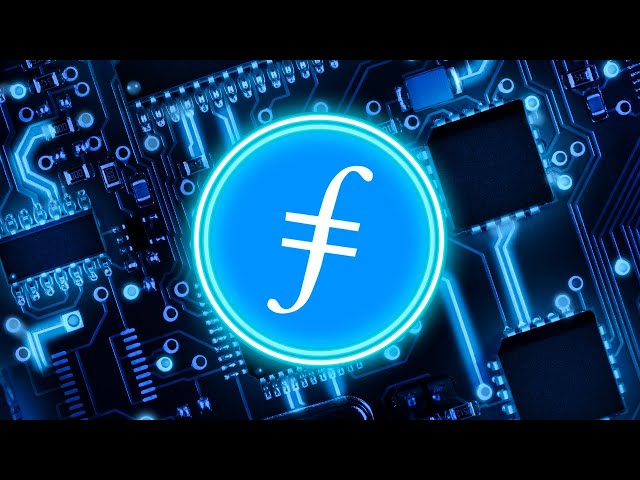Filecoin (FIL)
Wager with FIL token 🚀Filecoin is a decentralised open-source cloud storage marketplace, protocol, and incentive layer based on blockchain technology. Its native cryptocurrency is the FIL token. In this guide, we’ll explain everything you need to know about Filecoin and FIL.

What is Filecoin (FIL)?
Filecoin is an open-source cloud storage marketplace, protocol, and incentive layer. It aims to make storing information more robust, and accessing it more efficient, while helping fight censorship.
To do this, it creates a decentralised market in which geographically local storage providers can bid for storage contracts of all sizes. Those storing data can choose the best bid based on price and speed, and verify their data is being stored securely via blockchain and smart contract technology.
Clients wishing to access specific files can find them on a marketplace and pay a fee to access them from the most attractive storage provider. Files that become popular can be reposted by other storage providers, meaning they spread around the world, and become close to the end users. This creates a much more robust and decentralised global information infrastructure.
The Filecoin project was launched by Protocol Labs in August 2017, and was based on its earlier InterPlanetary File System (IPFS). The native token of the Filecoin blockchain is FIL – it went live on the Filecoin mainnet in October 2020.
Filecoin (FIL) Basics
Filecoin Blockchain
The Filecoin network is powered by the Interplanetary File System (IPFS) of peer-to-peer nodes. Unlike more common proof-of-stake and proof-of-work blockchains, Filecoin uses both proof-of-replication (PoRep) and proof-of-spacetime (PoSt) consensus mechanisms.
Proof-of-storage shows that a certain amount of space is available, while proof-of-spacetime is used to prove that the provider has spent a specific amount of time keeping the reserved space unchanged.
FIL Mining and Staking
You can mine FIL in two ways.
- Storage mining – Join the Filecoin network and contribute unused hard drive space. You will earn FIL proportional to the amount of disk space allocated. Storage miners can have their stakes slashed if they do not behave appropriately.
Retrieval mining – Extract and share files with users beyond the Filecoin blockchain.
FIL Supply
There is a fixed cap of 2 billion FIL, and the emission rate (minting) will get significantly slower as time goes by. FIL tokens are also burned when storage miners have their stakes slashed.
Filecoin (FIL) Adoption & Usability
Filecoin’s primary use case is as a reward for storage and retrieval miners, however, it can also be traded in its own right on many crypto exchanges. Thus, the adoption of FIL is inextricably linked to the growth of the Filecoin Network. At the time of writing, some huge projects were using Filecoin, including Internet Archive and the world’s biggest NFT marketplace, OpenSea.
Filecoin (FIL) Fees and Speed
FIL transactions are subject to gas fees which vary according to a rather complicated formula. Transactions can take up to 100 minutes to fully confirm – though can be quicker.
Filecoin Security and Safety
To ensure maximum security, client’s files are normally stored by several miners, and miners must pay a deposit which they could lose (slashing) if they don’t provide safe storage and access.
The highly decentralised nature of the Filecoin network, and the fact that there are relatively high mining rewards means participants are both structured and incentivised to maintain a robust and secure ecosystem.
In terms of using FIL as a cryptocurrency, it is most vulnerable when using third-party applications like crypto exchanges and wallets.
Security and safety tips:
- Don’t leave your FIL on-exchange for longer than absolutely necessary. If you are not currently trading, transfer them to a local wallet for short-term storage or staking.
- For long-term storage or staking, keep your crypto in a hardware wallet.
- Always keep your wallet keys in multiple safe places – they cannot be recovered.
- Never tell anyone about your crypto holdings. No matter how secure your storage is, if you or your loved ones are physically threatened, you’ll probably hand over your personal keys.
FIL Volatility
As we’ve so often seen, the FIL token plummeted in value immediately after launching, dropping from over $60 at launch on 20 October 2021, to just over $20 by the end of the year. However, with the great crypto bull run of 2021, the token hit a record high of over $236, before riding a rollercoaster all the way down to under $5 by December 2022.
Final Word on Filecoin (FIL)
As the native cryptocurrency of the Filecoin network, the fate of FIL is fundamentally tied to the success of the Filecoin ecosystem. And, compared to most other blockchain and crypto projects, Filecoin has a very definite and concrete use case – i.e. decentralised data storage.
The finite supply and deflationary qualities of FIL should also, in theory, put an upwards pressure on price. But, as always, mass adoption and scaling are going to be critical. Will the Filecoin network attract enough participants to succeed in the long-run? Is it attractive enough to tempt users away from traditional centralised and cloud storage infrastructure? Only time will tell.


